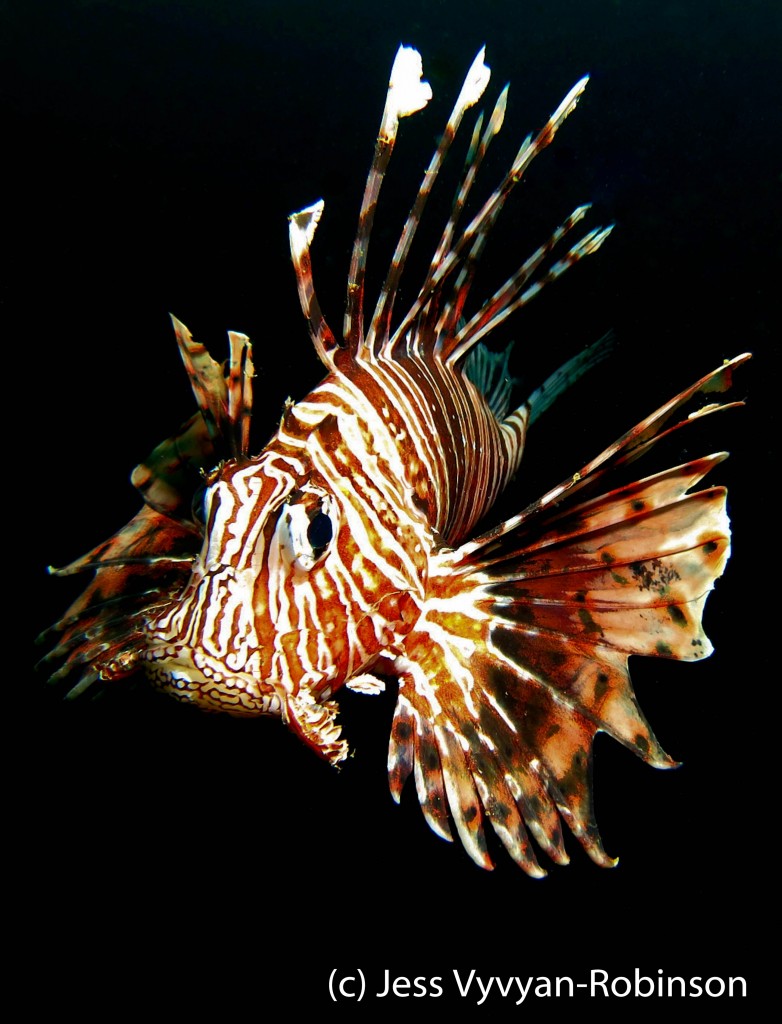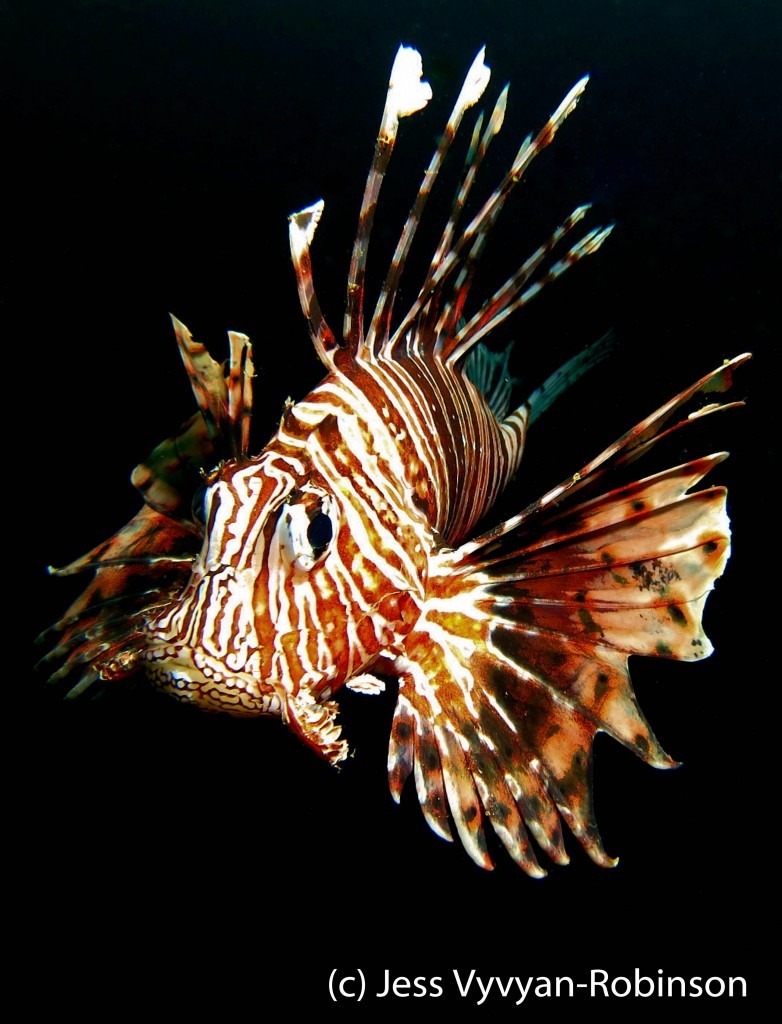
From the Philippines to Micronesia, lionfish are a common sight throughout the Indo-Pacific, where their delicate beauty and charismatic nature have made them firm favorites for divers and underwater photographers alike. There are ten species of lionfish, most of which originate in either the Indian or Pacific oceans. Although each species varies slightly in size, coloration and appearance, all of them have several characteristics in common. These include fan-like pectoral and dorsal fins, bodies adorned with bands of vivid color, and highly venomous spines. As is often the case in Nature, a lionfish’s mesmerizing beauty serves as a warning of its toxicity- the venom in its spines is potent enough to put off any would-be predators, meaning that lionfish have very few natural enemies. Instead, lionfish are themselves the apex predators of the reef, using their large pectorals to fan prey towards them that they then swallow whole. They are perfectly adapted for their role, equipped with bilateral swim bladders that allow them to achieve flawless buoyancy whilst approaching their quarry.
The effect of lionfish venom on humans can be severe, with symptoms including vomiting, fever, convulsions, and in extreme cases, heart failure and even death. However, lionfish are rarely aggressive towards humans, preferring instead to focus their attention on the creatures that make up their diet. They are proficient hunters, preying predominantly upon juvenile fish, molluscs and invertebrates. In their native waters, this considerable appetite is a functioning part of the marine ecosystem that causes no issue. However, in the past twenty years lionfish have expanded beyond their natural habitat and are now found off the East coast of the United States and throughout the Caribbean. There, their presence has become a major cause for concern and has created a phenomenon known as the Great Lionfish Invasion. Exactly how lionfish were introduced into the Atlantic is a subject of much debate- some experts blame the aquarium trade, suspecting that the first specimens were discarded into the ocean by irresponsible owners, while others believe that lionfish were transported in the bilge pumps of long-distance container ships.
Whatever their origin, lionfish are now creating havoc upon the reef systems of the Western Atlantic and the Caribbean. Native fish species are not equipped to deal with the sudden invasion of such a successful predator, and the damage they have wreaked upon juvenile fish nurseries is devastating. In addition, the complete absence of any natural enemies combined with the favorable conditions of their new home means that lionfish populations have expanded by 700% in some areas over a four year period. As a result of the invasion, reef diversity in the Atlantic could be reduced by 80%. This is due in part to the removal of native species into less favorable conditions in an attempt to escape lionfish predation, and partly as a result of decimated juvenile fish populations. In an attempt to restore the balance, dive centers and conservation groups throughout the southern States and the Caribbean are introducing drastic measures in an attempt to control lionfish populations; including organized culls, the promotion of lionfish as an edible source of seafood and lionfish hunting derbies.
Ironically, while lionfish have come to be perceived as a dangerous pest in the Americas, they continue to delight divers in countries like Indonesia and Thailand. This animal that embodies both the beauty and the beast provides a constant source of debate – which side are you on?





